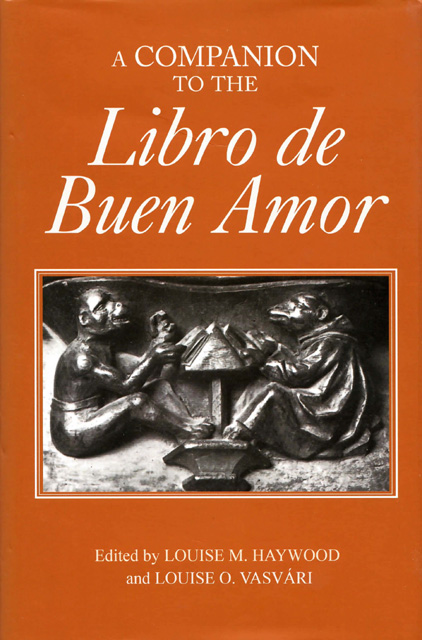Book contents
Libro de Buen Amor: From Script to Print
Published online by Cambridge University Press: 10 May 2023
Summary
Medieval literature and ‘mouvance’
To pick up a printed copy of Libro de Buen Amor is to encounter one of the most familiar objects in our world; but a modern book differs radically from a manuscript. For H. J. Chaytor the invention of printing ‘modified the psychological processes by which we use words for the communication of thought’ (1966: 1), while Hans Robert Jauss saw the milieu of script and orality as a feature of medieval otherness which no hermeneutic effort can now fully recapture (1977: 16). This chapter aims to unpack these statements and their bearing on our aesthetic appreciation of Juan Ruiz’s text.
The visual contrast between the neat typeset pages of a recent edition of the Libro and the hand-traced leaves of its medieval witnesses provides a useful point of departure. The latter are the work of men who, with cramped fingers and aching backs, toiled for months laboriously scratching out their copy with goose-quill and home-made ink. As they puzzled over the exemplar, unscrambling its many crabbed abbreviations and mistakes, they made their own errors by skipping or misreading; sometimes they skipped deliberately, or added passages of their own. Every codex was a unique artefact, ‘a leisurely accumulation of heterogeneous texts’ (Ivy 1958: 59). Our comfortable illusion of a regular text consisting of prose prologue, 1554 stanzas of cuaderna vía, and 174 lyric strophes crumbles before the bewildering mouvance (‘textual instability’) of the medieval Libros – not so much a single book as a clamorous tangle of voices. All three MSS include other text besides Buen Amor, and marginal notes by later readers (Dagenais 1994: 153–70). The most nearly complete, S, lacks ten of its 114 leaves; G and T are more seriously damaged, but we know they were ninety stanzas shorter than S. Only 351 stanzas and parts of three others are transmitted by all three witnesses. The scribes used different spellings and dialects (Blecua 1992: lxxxvi–xci). Of half-lines shared by more than one witness, some 44% show differences of wording (Gybbon-Monypenny 1972: 233–34). Besides thousands of variants the tradition poses problems about the number and order of stanzas, how many lyrics were included, how much of the original it preserves, how much of it is by Juan Ruiz, and whether it transmits a single text, various versions of the same text, or a collection of disparate pieces.
- Type
- Chapter
- Information
- A Companion to the Libro de Buen Amor , pp. 39 - 68Publisher: Boydell & BrewerPrint publication year: 2004

